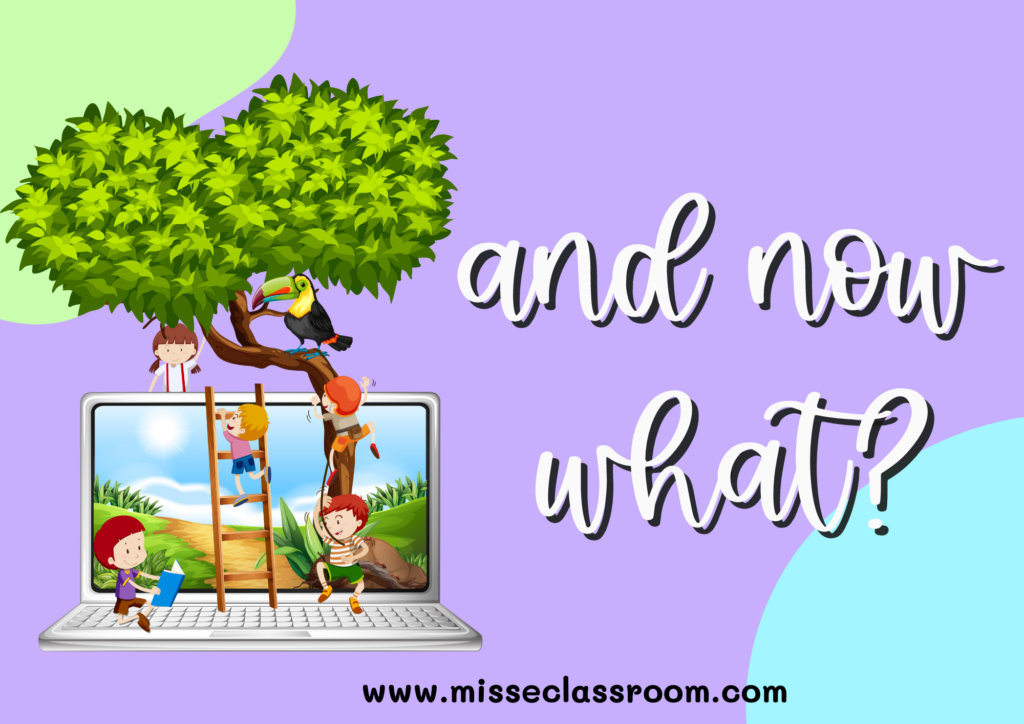In today’s digital age, technology has become an integral part of education, and many teachers are incorporating screen time into their lessons to enhance student engagement and learning. This innovation is what made it easy for schools and teachers to use virtual platforms to conduct classes during the height of the Covid-19 pandemic.
However, for very young learners in an EFL (English as a Foreign Language) context, determining the ideal amount of screen time can be truly challenging in terms of what is really considered beneficial now that we are back to face-to-face classes.

Benefits of Screen Time
There are some benefits of incorporating screen time into language learning for very young learners.
- It can provide a more engaging and interactive learning experience, which can increase motivation and interest in the language.
- Technology provides access to a vast range of multimedia resources, such as videos, audio recordings, and interactive games, which can cater to different learning styles and preferences.
- Screen time can facilitate distance learning and provide access to language learning resources for learners who are unable to attend in-person classes.
Screen time activities may also influence a love for the activities and help kids make the association that their devices can be used to access educational content that is fun and engaging.

Disadvantages of Screen Time
It’s been highly reported around the world that the constant use of screens in and out of schools have some worrying facts among kids, like learning disorders for the disproportionate use of phones or tablets.
- What experts call the “displacement effect” associated with poorer cognitive development and explains that time spent online means not doing other things, and that it’s the loss of those other activities that may result in problems paying attention.
- The American Academy of Pediatrics discourages digital media use (other than video chatting) for children younger than 18 months, recommends that adults co-watch only high-quality programming for children 18–24 months, and recommends limiting children between 2 and 5 years to 1 h per day of high-quality. programming.
- When we give our students everything done and pre-digested it is biologically that kids loose curiosity, interest and focus on what surrounds them.
So how much Screen Time is Acceptable for Children?
Studies have shown that too much screen time can have negative effects on young children with regard to their physical, emotional, and cognitive development. Therefore, it is crucial to limit the amount of time that very young learners spend in front of screens as mentioned before. The American Academy of Pediatrics recommends that children should have consistent limits on the amount of time spent using electronic media that includes phones, tablets, video games & T.V.

What to do to enhance Language Learning?
In an EFL classroom, incorporating screen time into lessons can be really challenging and interesting to discuss with our principals and parents to get a concensus.
It should be viewed as a supplementary and rare teaching tool, rather than a replacement for other teaching methods that will better help fostering wonder, magic, curiosity and the love for researching and questioning. Screen time should be balanced with other forms of interactive activities like hands-on learning, critical thinking, exploring and playing with the language to ensure a well-rounded and varied learning experience.
Ideally, screen time should be limited to 10 – 15% of the total school year. The remaining time should focus on other activities such as role-play, group discussion, storytelling, cooking, etc that will allow children to use all their senses to learn and engage with the language.
Additionally, it is important to monitor the quality of the content being used and to ensure that it aligns with the language learning objectives of the lesson.


